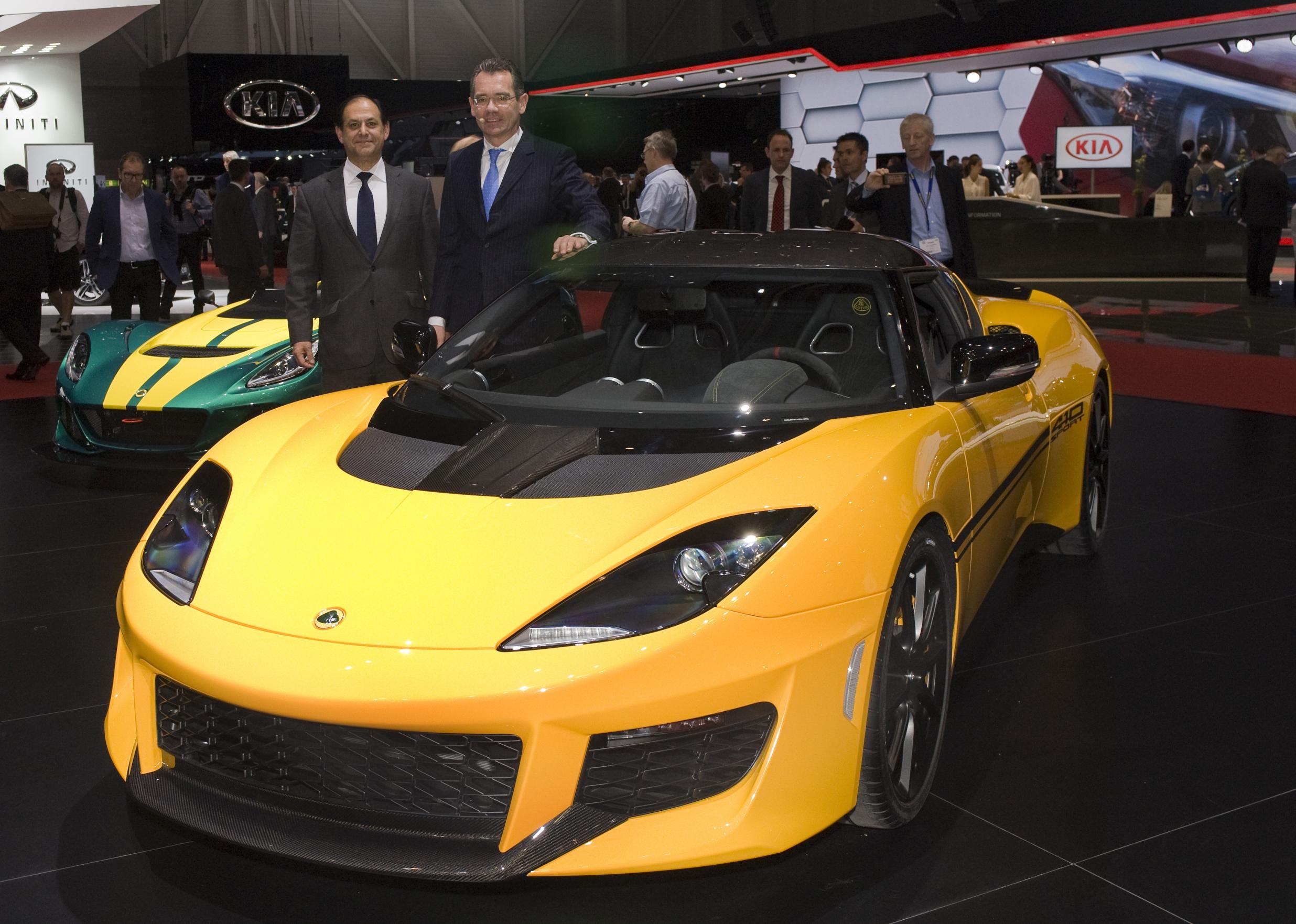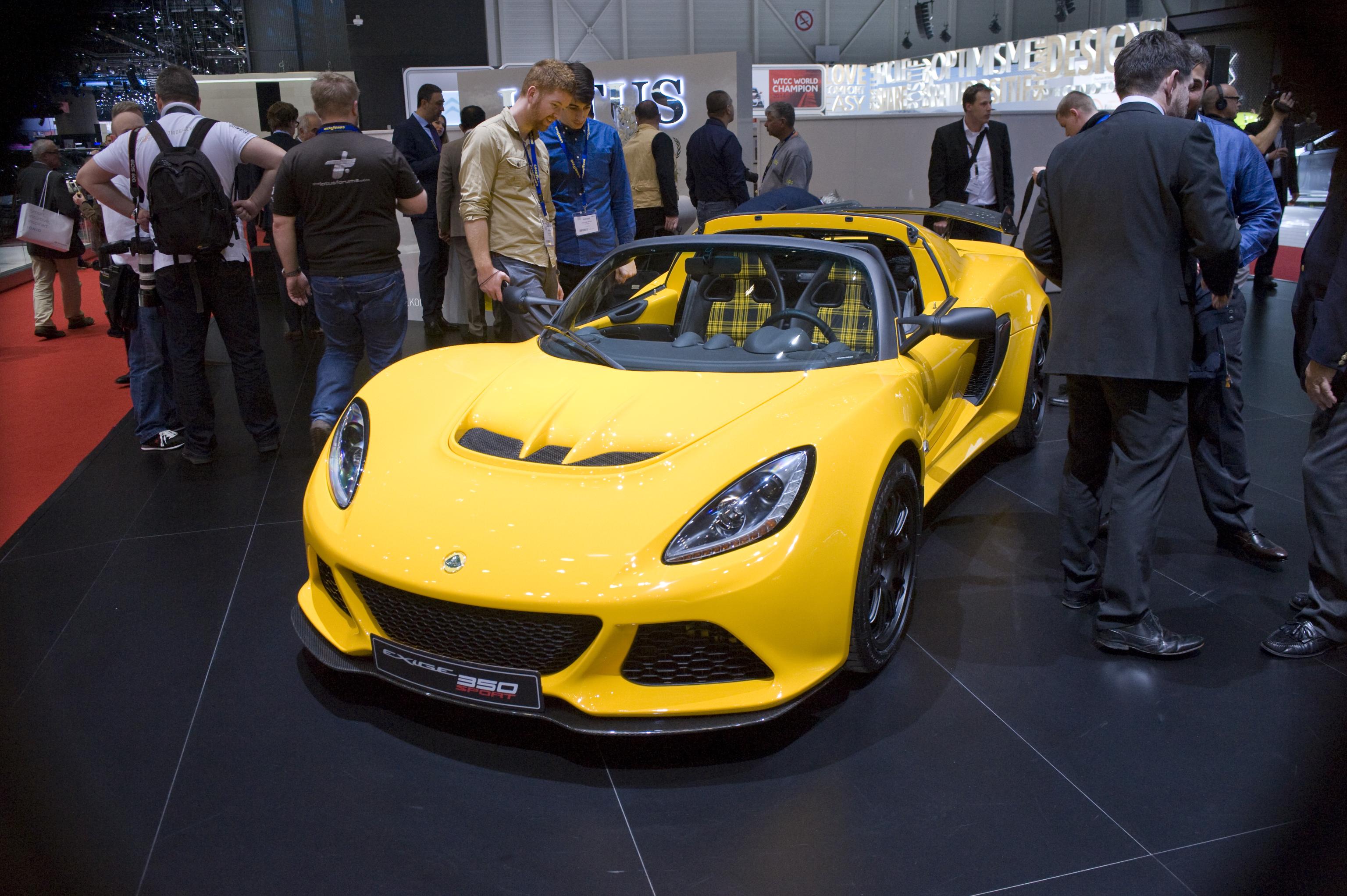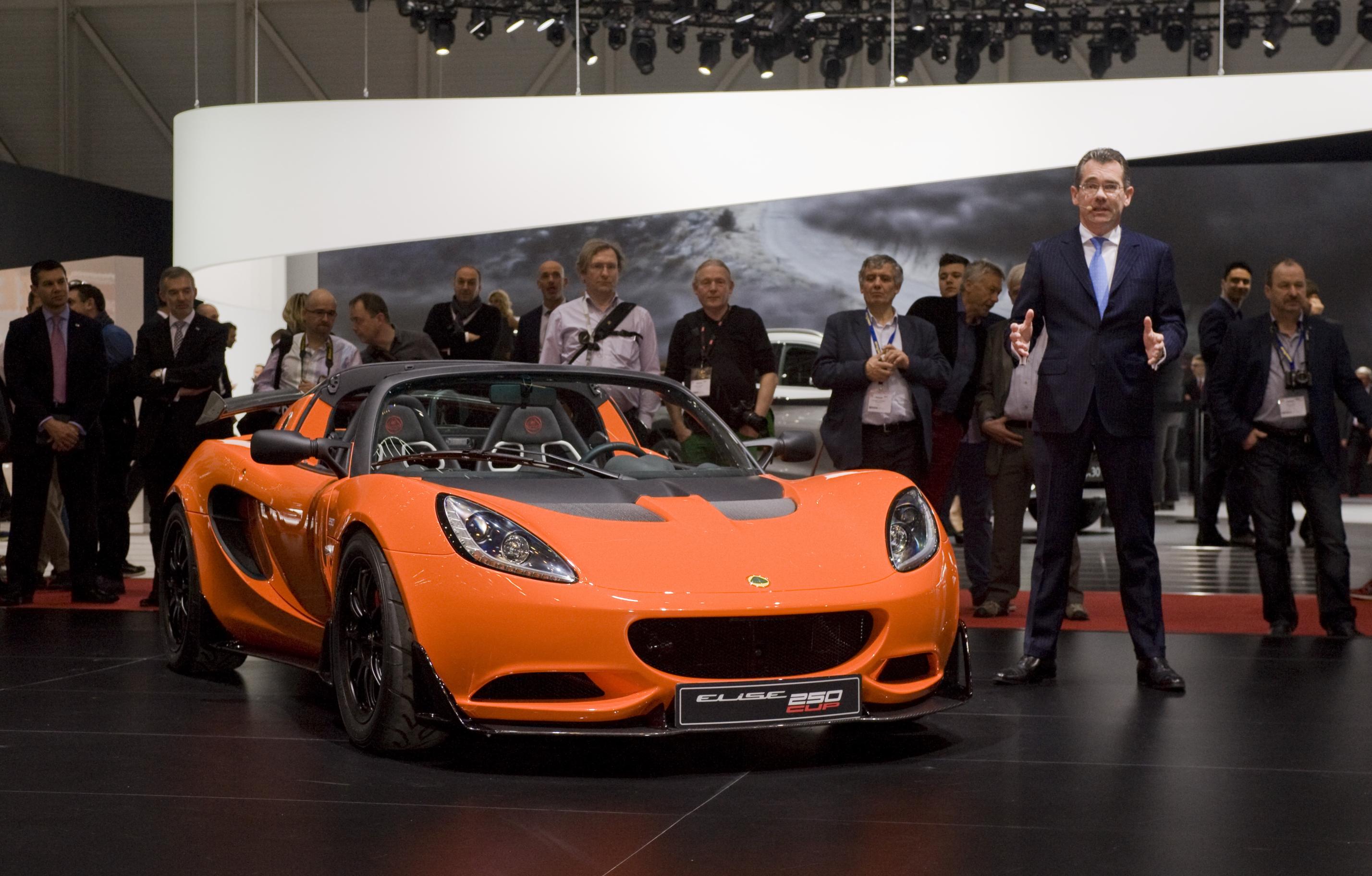
- Quickest ever line up of Lotus cars
- Engineering focus on added lightness
- Carbon fibre as standard on new models
- Exige Sport 350 Roadster, Evora Sport 410, Elise Cup 250 and 3-Eleven on show
The fastest ever line up of Lotus production road cars has been unveiled at this year’s Geneva International Motor Show, with carbon fibre and lightweight engineering taking centre stage.
With all of the four new models capable of 0-60 in 3.9 seconds or less, Lotus’ 2016 range drives home the company’s commitment to developing pure, driver-focused sports cars with exceptional performance.
The lightened and faster line up of Lotus cars continues the company’s recent successes. Over the last 12-months it has consistently cut mass from its vehicles in order to enhance handling and boost straight-line speed.
Covering the entire Lotus portfolio, the four new cars displayed include the debut of the Exige Sport 350 Roadster as well as the recently announced Evora Sport 410 and Elise Cup 250. If that wasn’t enough, the spectacular Lotus 3-Eleven is also on show – following its success on the notorious Nürburgring Nordschleife.
Each of the four cars in Geneva has been developed through Lotus’ Lightweight Laboratory concept. Thoroughly re-evaluated – with every component assessed, optimised and reengineered as required – the cars represent the epitome of Lotus’ “light is right” approach to engineering.
Personally pulling the covers from the lightweight legends, Lotus CEO, Jean-Marc Gales remarked on the company’s return to form, “Today, we set the benchmark for added lightness – this is what Lotus does and nobody does it better. We are making our best ever cars, and across the world more customers are experiencing what a Lotus is capable of.”
With a heritage of efficient design, that stretches back to 1948, Lotus enjoys an unrivalled reputation for the development of lightweight sports cars. The current line up remains true to the ethos of Lotus founder Colin Chapman and his approach to car design and construction.
As the first constructor to introduce a carbon fibre Formula One car, Lotus has over 35 years’ experience with the lightweight, reinforced composite material. This next generation of car on show in Genevadraws heavily on the use of carbon fibre, using it to form key components including: rear wings, front splitters, roof panels, tailgates, rear diffusers, sports seats and access panels.
The Lotus cars on display at the 2016 Geneva International Motor Show include:

Evora Sport 410
This new, top-of-the-range Evora has been thoroughly re-evaluated, with a 70kg drop in kerb weight and a power boost, thanks to the supercharged engine it shares with the track-bred Lotus 3-Eleven.
With a host of high-performance carbon fibre components as standard, the Lotus Evora Sport 410 clocks 0-60 in 3.9 seconds on its way to a top speed of 186mph.
With a lower centre of gravity, and a kerb weight slashed to just 1,325 kg, the car provides an impressive 309 hp/tonne, and builds on the achievements of the excellent Evora 400.
(Jean-Marc Gales, CEO of Group Lotus plc on the right with Aslam Farikullah, COO of Group Lotus plc)
In addition to boosting acceleration, the significant reduction in mass has allowed the recalibration of the suspension, with revised geometry and damping, to deliver sharper, more agile and intuitive handling. However, far from a stripped-out special, the Evora Sport 410 retains excellent road manners proving refined and composed during everyday driving.
Jean-Marc Gales, CEO of Group Lotus plc said, “We’ve really gone flat out to cut weight – front splitter, roof panel, tailgate, and rear diffuser, seats – all in carbon fibre. And it’s all fitted as standard on this car. Of course, by losing all this weight the car isn’t just faster, it’s also better to drive. The steering feel, and agility, is incredible for a car of this size and the ride is outstanding.”
The Evora Sport 410 is capable of lapping the company’s Hethel test track in 1 minute 28 seconds – an impressive 3 seconds faster than the Evora 400.

Lotus Exige Sport 350 Roadster
As the logical evolution of one of Lotus’ most recent success stories, this year’s Geneva Motorshow is the world debut of the new Exige Sport 350 Roadster.
Hot on the heels of the coupe version, announced at the end of 2015, this Roadster derivative of the iconic sports car is lighter and faster than ever before, thanks to a 40 kg weight drop, compared to the hardtop version.
By selecting the lightweight options available, including a Lithium-ion battery, lightweight forged alloy wheels, cross drilled and vented two-piece brake discs, together with carbon fibre items such as the rear tailgate, side air intakes and seats as well as a revised composite front access panel the total weight of the car can be reduced to 1,085 kg – the lightest possible incarnation of the current generation Exige.
The Lotus Exige Sport 350 Roadster on display at the Geneva Motorshow benefits from not just the available lightweight options but also the Carbon Aero Pack includes a front splitter, rear wing and rear diffuser made from carbon fibre.
Jean-Marc Gales, CEO of Group Lotus plc, commented, “We achieved so much when developing the Exige Sport 350, reducing weight and making it even sharper and tightly focussed; and the Exige Sport 350 Roadster takes this yet further. Yet again we’ve been able to slash weight to produce something that should be on every sports car fan’s wish list.”
As the lightest ever V6 powered Exige, the 345 hp roadster boasts a 0-60 time of 3.7 seconds, and a top speed of 150 mph.
The Roadster also features the heavily revised manual gearbox from the coupe, to provide faster and more precise gear selection. Using lightweight machined and cast aluminium components, the mechanism is not only aesthetically appealing but also cuts the complexity, and weight, of construction for the car’s centre console. As standard, lightweight components include a louvered tailgate panel, a lighter battery and lightweight engine mounts.
A smooth-shifting 6-speed automatic gearbox is available as an option, with electronically optimised up-shifts. Drivers can change gears manually via forged aluminium paddles mounted to the steering wheel, or rely on the gearbox’s fully automatic mode.
Optional trim packs provide a heritage theme to the cabin with lightweight sports seats and door panels clad in red or yellow Tartan, with leather or Alcantara interior trim options also available.

Lotus Elise Cup 250
The legendary Elise returns to Geneva in its fastest ever guise: the Elise Cup 250.
Having shed 21 kg and gained 26 hp, the Elise Cup 250 can accelerate from 0-60 mph in 3.9 seconds and deliver a top speed of 154 mph.
Powered by a new higher-output version of the supercharged, 1.8-litre 4-cylinder engine, the Elise Cup 250 boasts 243 hp. Long seen as the benchmark for handling, the Lotus Elise Cup 250 is available for the first time as a roadster as standard with a hard top available as an option.
Included on the Geneva show Elise is the optional Carbon Aero Pack which replaces the standard front splitter, rear wing, rear diffuser and side floor-extensions with lightweight carbon components. Suitable for those wanting to boost performance, the pack cuts the car’s weight by an extra 10 kg, reducing the mass to just 921 kg.
Jean-Marc Gales, CEO of Group Lotus plc said, “More important than the performance figures is how good it is to drive. Supremely sharp and pure, it is capable of amazing things on a track, but that doesn’t mean it can’t be driven and enjoyed every day.”
With the new car lapping the company’s test track in 1 minute 34 seconds, the changes and engineering adaptions to the Elise Cup 250 have taken an impressive four seconds off the previous Elise Cup 220’s best time.
The aerodynamically optimised body kit provides 66kg of downforce at 100mph and an impressive 155 kg at maximum velocity of 154 mph.
Lotus 3-Eleven
Heralding the next generation of Lotus high performance sports cars, the 3-Eleven is the company’s quickest and most expensive series production car ever.
Designed to deliver an undiluted experience, the Lotus 3-Eleven utilises an all-new lightweight composite body, and a bespoke chassis based on the proven Lotus design of extruded and bonded aluminium sections.
The 3-Eleven offers a giant-slaying power-to-weight ratio, thanks to a revised V6 supercharged engine developing 460 hp, to provide in excess of 500 hp per tonne. It is capable of sprinting from 0-60 mph in 2.9 seconds before reaching a maximum speed of 180 mph (290 km/h).
As part of its development the Lotus 3-Eleven spent time at the Nürburgring Nordschleife, where it was one of the fastest road going cars to ever tackle the track, capable of setting a sub-7 minute lap time.
Jean-Marc Gales, CEO of Group Lotus plc said, “When we announced the 3-Eleven last year we knew that it would be fast, but the times that it has set at the Nürburgring have been world class. This shows how we are looking to the future, and engineering lightness into all our cars.”
All of the models on the Lotus stand at the 2016 Geneva International Motor Show are available for order from now.
